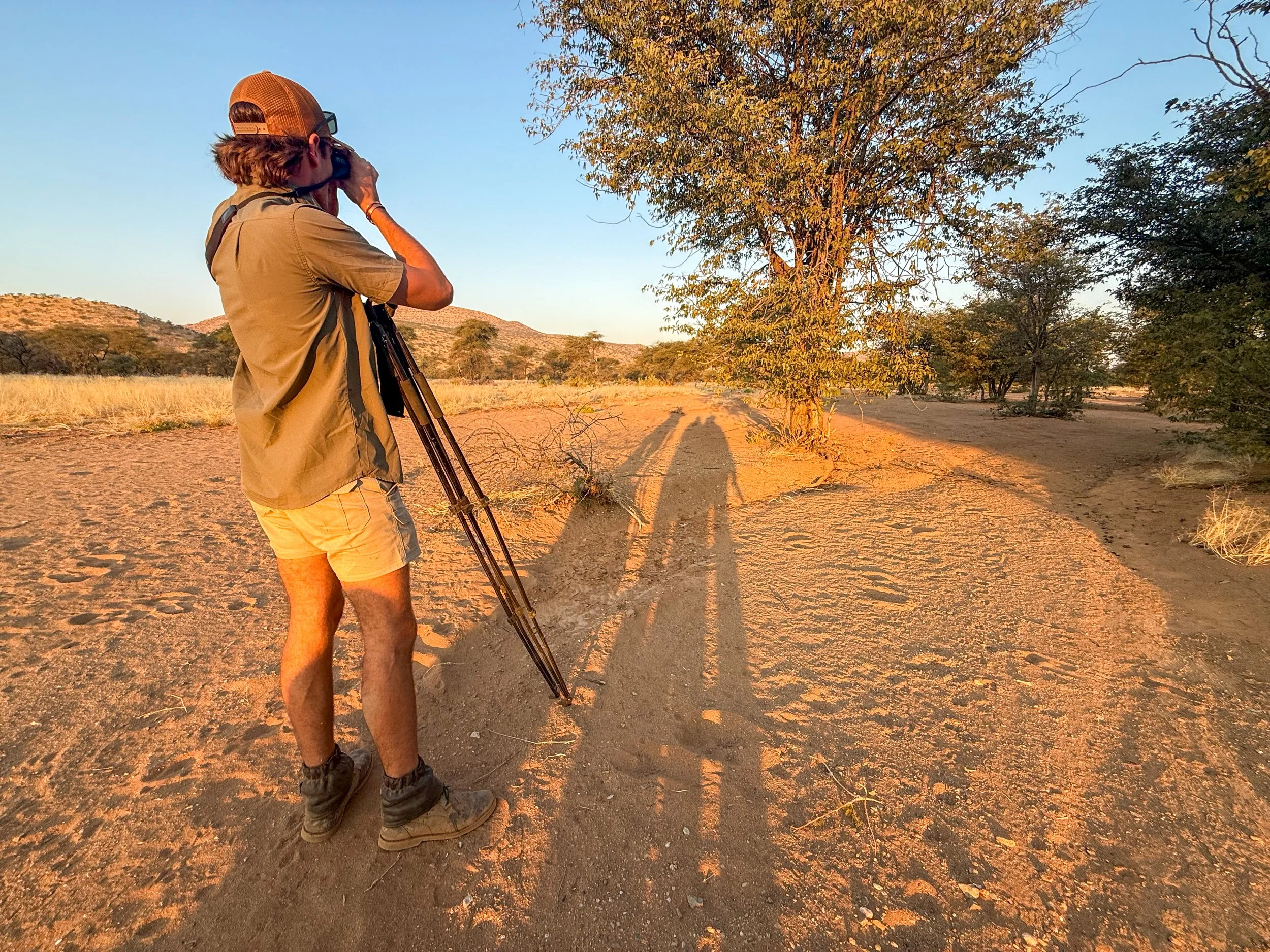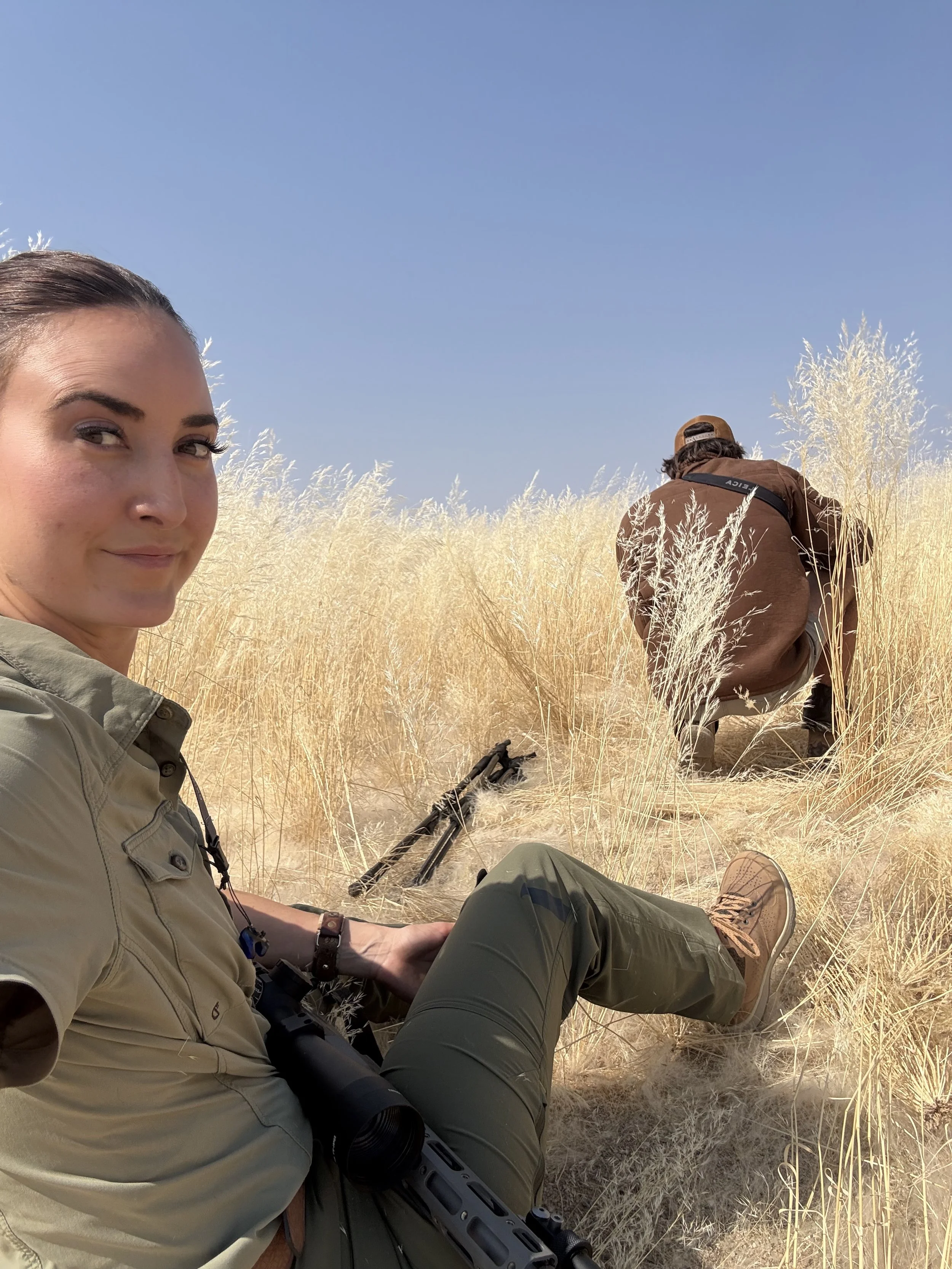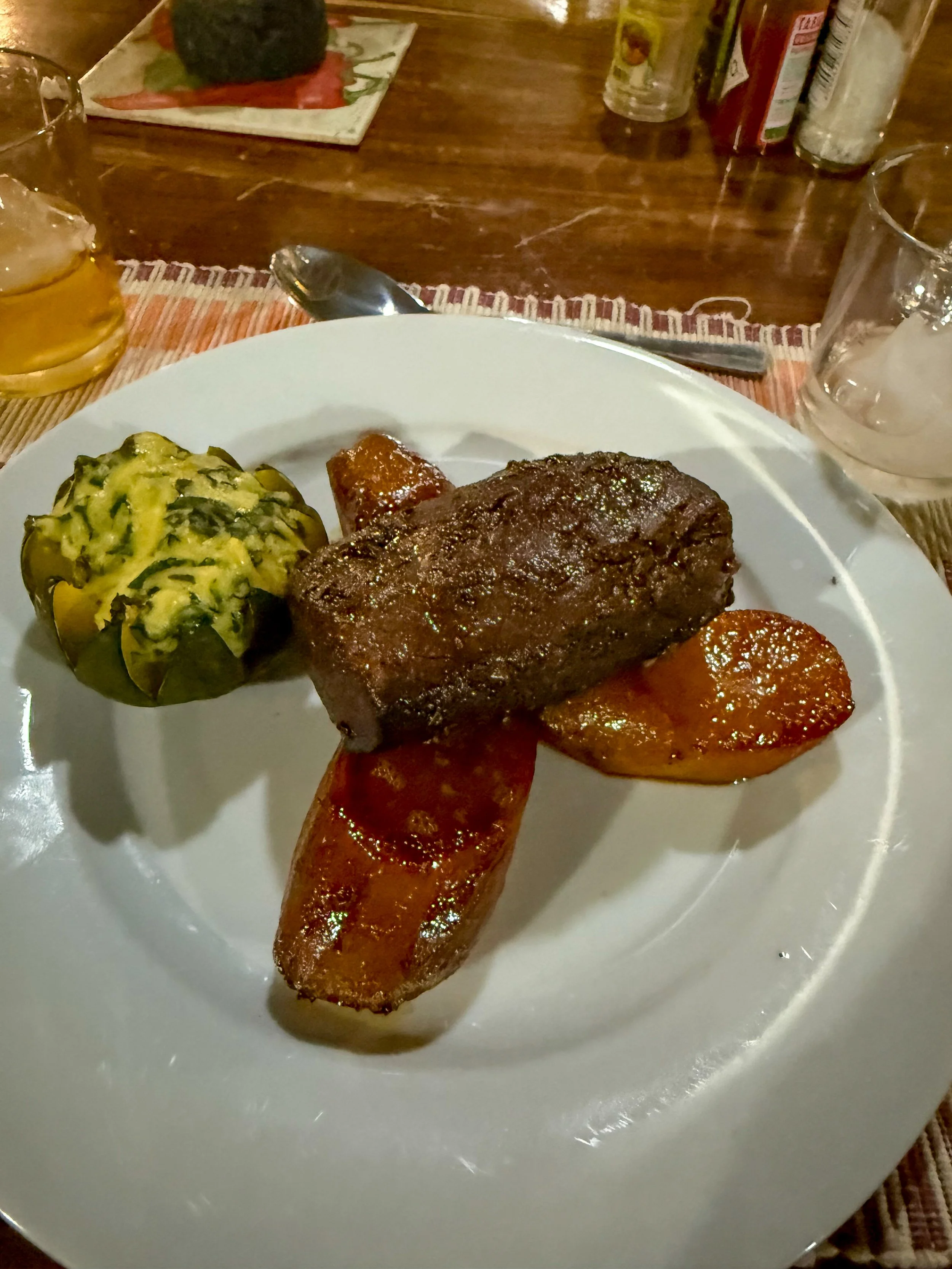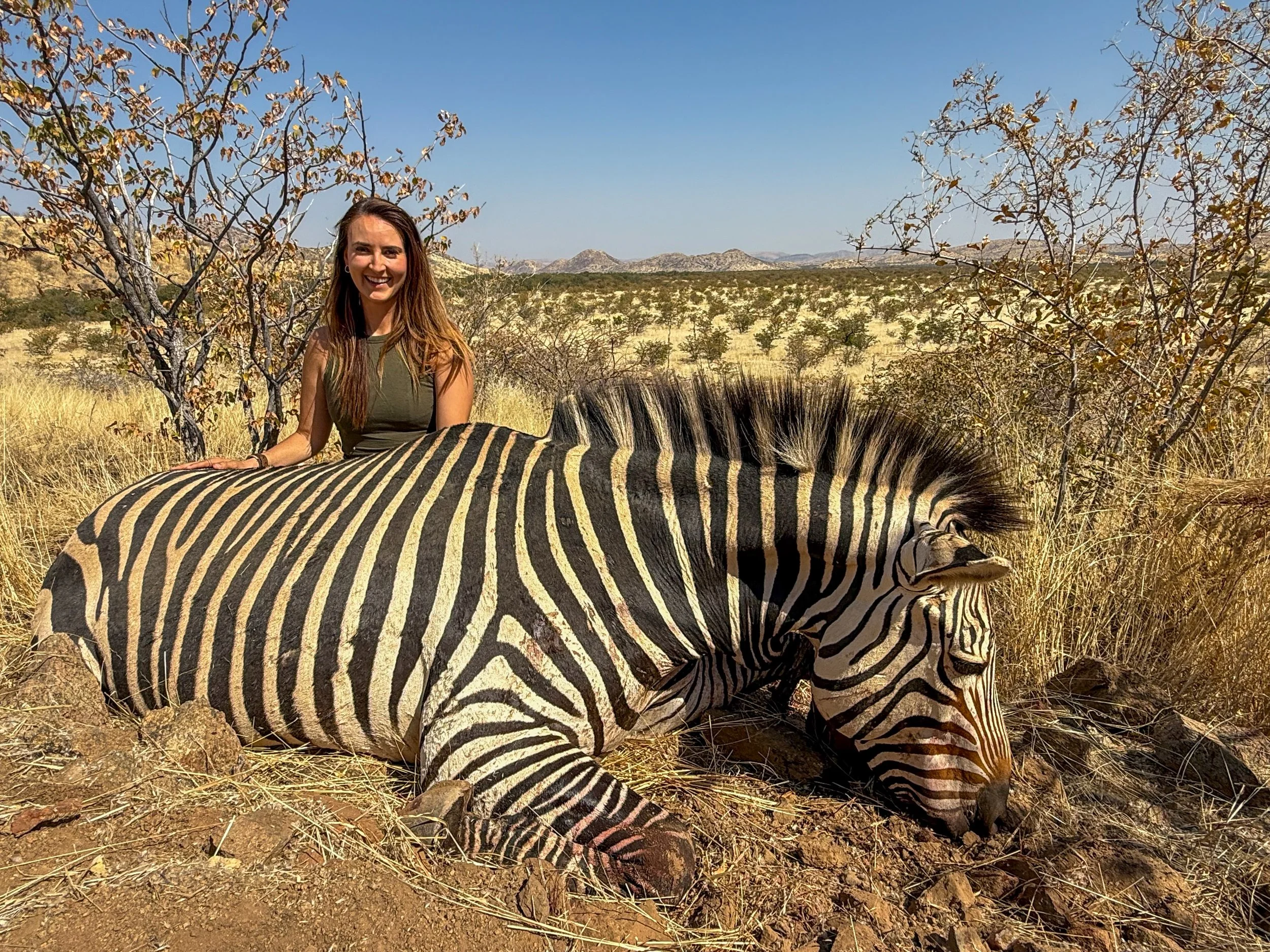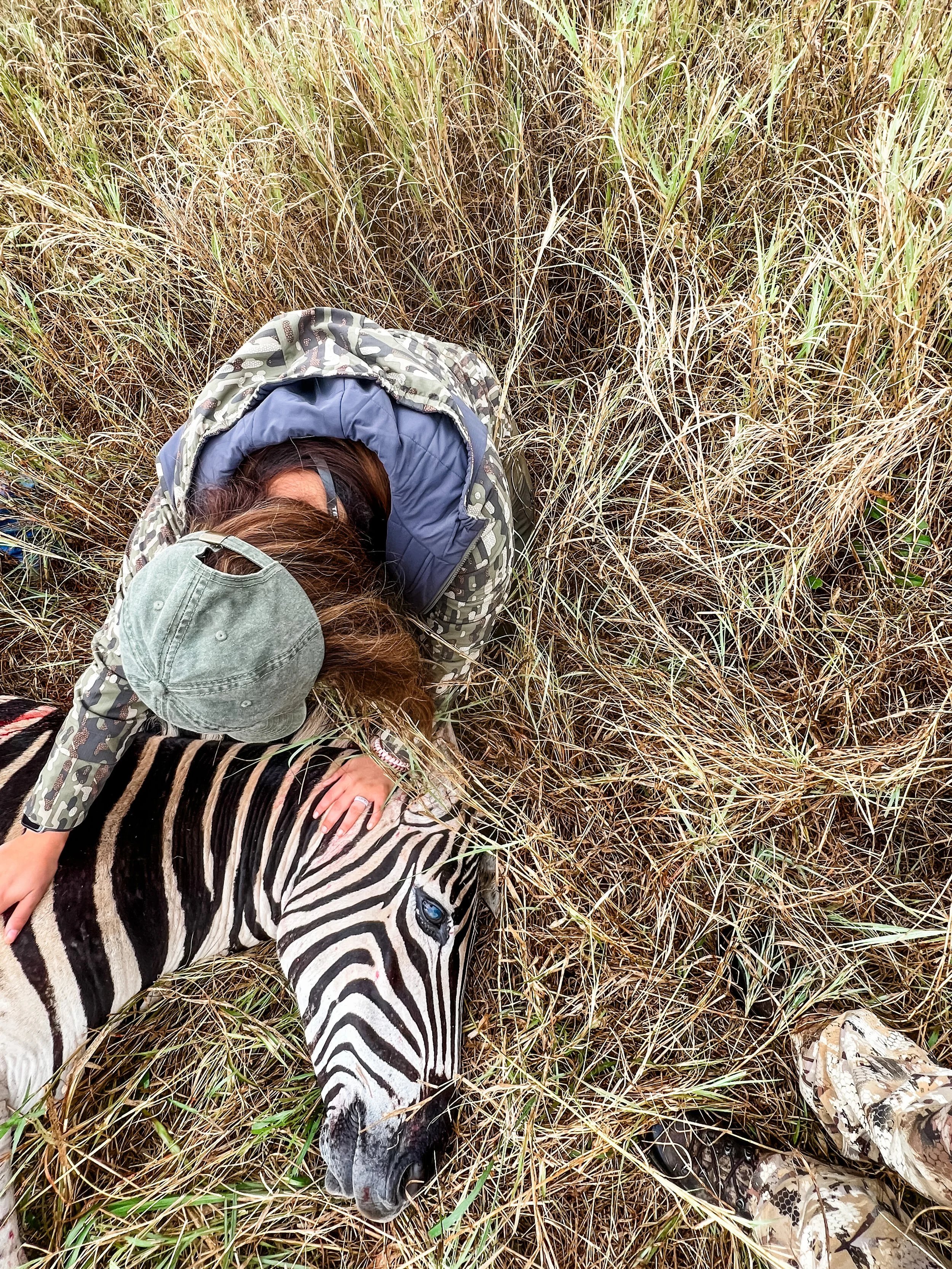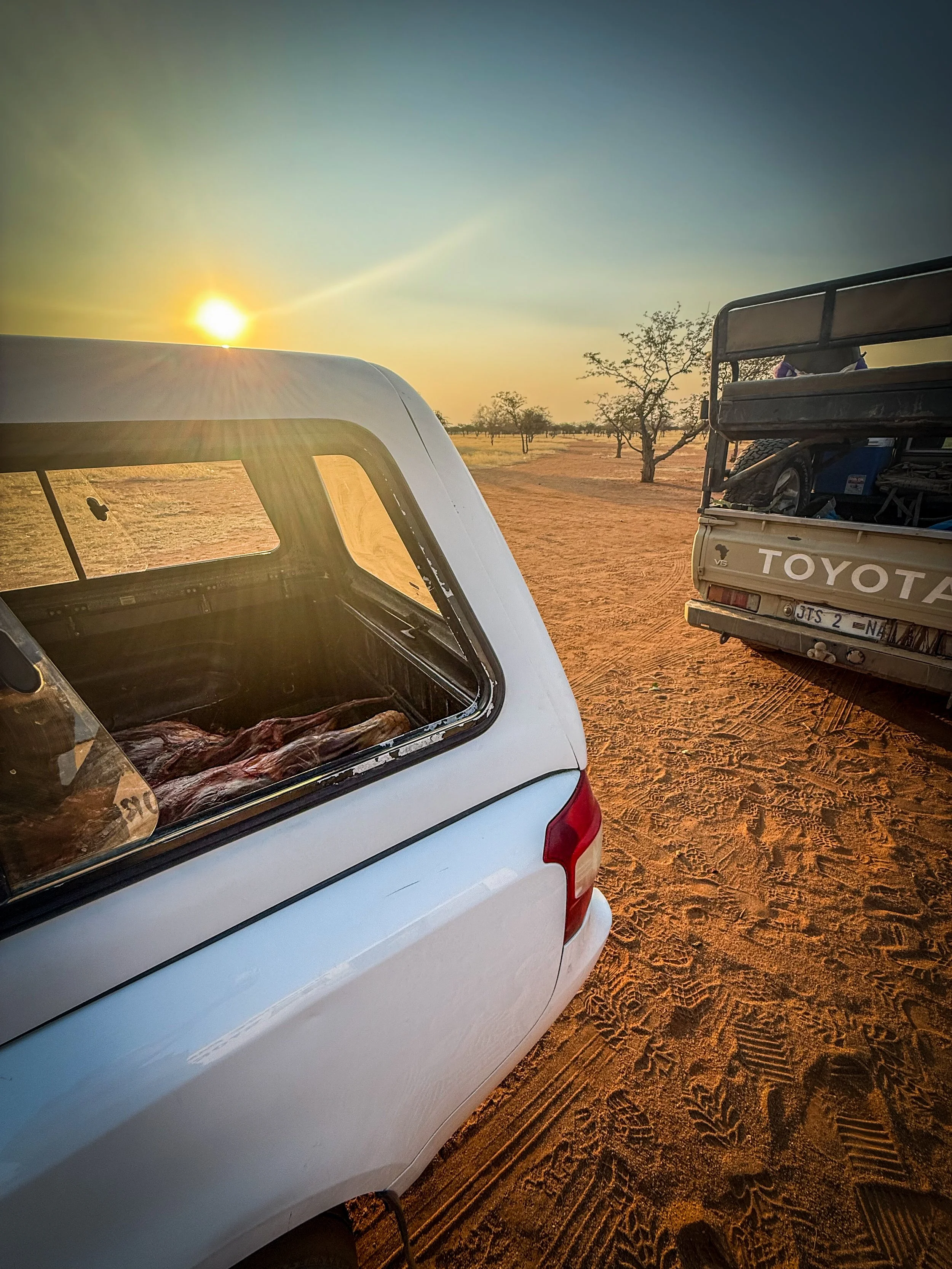Patience, Springboks, and Cotton Candy
A lesson in patience during my Namibian safari: two days of stalks, missed chances, and finally a clean shot on an old springbok - complete with a cotton candy surprise.
My grandmother always told me, patience is a virtue. I didn’t realize how true that would become until I found myself crawling through the African bush, heart racing, waiting for the right springbok ram. Out there, patience isn’t just a saying — it’s the line between an ethical shot and a missed opportunity. And strangely enough, sometimes the payoff smells like cotton candy.
Day Two: First Lessons in Patience
Our second day of safari had already been successful, earlier in the afternoon I had taken a beautiful Hartmann’s zebra. With daylight left, we set out looking for Springbok.
We spotted a herd and planned a stalk up the riverbank to avoid being winded. I had never stalked game before this trip and the rush was unforgettable. My PH led the line, then me, and behind us our two trackers, Tjevia and Tani. When we paused, the trackers glassed the herd while I tried to steady my breathing, heart pounding with adrenaline. Each step I searched for bare sand, reminding myself, quiet steps, stay calm.
From behind a tree, about 300 yards out, we watched the herd. But there were too many eyes - forty springbok in the open with nowhere to hide. My PH called it, and we retreated.
Driving back, we spotted two solid rams that had split from the group. This time it was just me and my PH off the truck. As I got into position, I was grateful for my illuminated reticle, perfect for low light. But I couldn’t line up quickly enough before the ram walked on. With dusk falling, I let the moment pass. It was more important to me that every shot on this trip was a clean, ethical one.
That evening, I carried no disappointment. I already had the zebra, and patience was teaching me that passing was sometimes the better choice.
Day Three: A Long Crawl in the Grass
The next morning we set out again for springbok. Along the way we bumped four Dik Diks - rare to see - and I wondered if it was a sign of good luck.
Sure enough, we soon spotted a herd standing in the open bushman grass. My PH explained that after years of drought, Namibia finally had rain, and where bare sand had been last season now stood tall grasses, some nearly three feet high.
Through his binoculars, my PH picked out a large ram bedded under a tree. He told the trackers to wait with the truck, and the two of us began our stalk.
At first we crouched, using distance as cover. My PH plucked handfuls of grass, holding them in front like a fan to break up our shape. Soon the stalk turned to crawling, sometimes on all fours, sometimes crab-walking, my Q Fix rifle with folded stock slung across my back. At each pause, he glassed while I focused on deep breaths in, deep breaths out, calming the adrenaline and saving steady aim for when the time came.
Finally, he motioned for me to dial to 150 yards and get ready. On the sticks, I found the ram in my scope but the tall grass swallowed his body, leaving only head and horns. I felt uneasy. It wasn’t enough for me to identify my target. I whispered to my PH that I couldn’t take the shot.
We crawled further, but after nearly an hour, the tall grass still blocked a clear view. Reluctantly, we backed out. It was the right call, even if it stung.
The Shot That Counted
Back at the truck, we drove closer. To our surprise, the herd didn’t spook. We seized the moment.
I jumped off, set on the sticks, and dialed for 170 yards. The ram we had been after trailed at the back of the herd. Through my scope I found the dark horizontal line along his body, followed it forward, and settled just above the leg. Squeeze. Shot.
The ram jolted, ran a short distance, and went down. The adrenaline crashed over me. After the long stalks and the waiting, it was done.
My PH and I exchanged fist bumps, both of us knowing how much work and patience had gone into that moment.
Cotton Candy and Reflection
As we approached the ram, the dorsal crest of white hair on his back stood straight up. My PH explained that springbok release a sweet scent when excited or stressed, like cotton candy. I leaned in, curious, and there it was, a strange, sweet smell rising from the gland sacs beneath the hair. Unique, unforgettable, and bittersweet.
He was an old ram, eight or nine years with secondary horn growth. Taking an aged animal, past its prime, felt right. Patience had delivered the opportunity for a clean, ethical shot, and the bush had provided.
Sharing the Meat
Back at camp, Alfons greeted me with his wide smile, just as he had after the zebra. He shook my hand firmly, his crooked eye glinting, only three fingers wrapping around mine. “Thank you for zebra,” he had said before. Now: “Thank you for springbok.” Knowing that much of our wild game meat would be shared through the conservancy, ensuring families in the community received food. Alfons’ gratitude reminded me again how nothing here goes to waste.
From the Field to the Table
The following evening, our camp chef Jackson prepared the springbok for dinner. He cooked it to perfection. Medium rare, tender, and rich with flavor. To my surprise, I loved it even more than zebra. It instantly became my new favorite wild game to eat, a fitting close to the patience and effort that went into the hunt.
Closing
As I replayed the stalk and shot in my mind, my grandmother’s words echoed again: patience is a virtue. In Africa, patience meant more than waiting for a shot; it meant discipline, restraint, and respect for the animal. The reward wasn’t only in the harvest, but in the hours of crawling through grass, the lessons learned about myself, the delicious springbok shared around our campfire, and the people I shared it with. From my PH crouched beside me in the bush to Alfons smiling with meat in his hands.
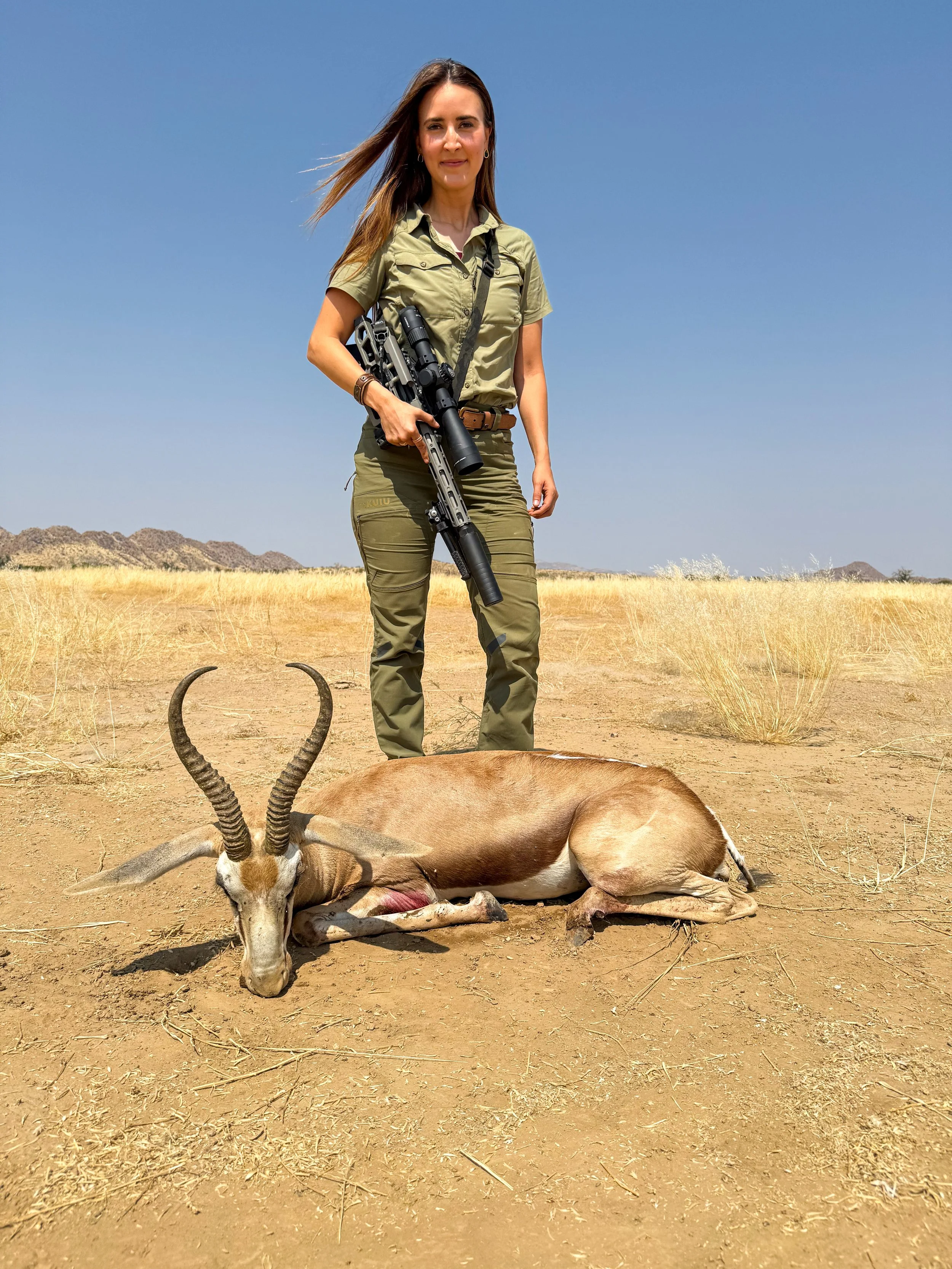
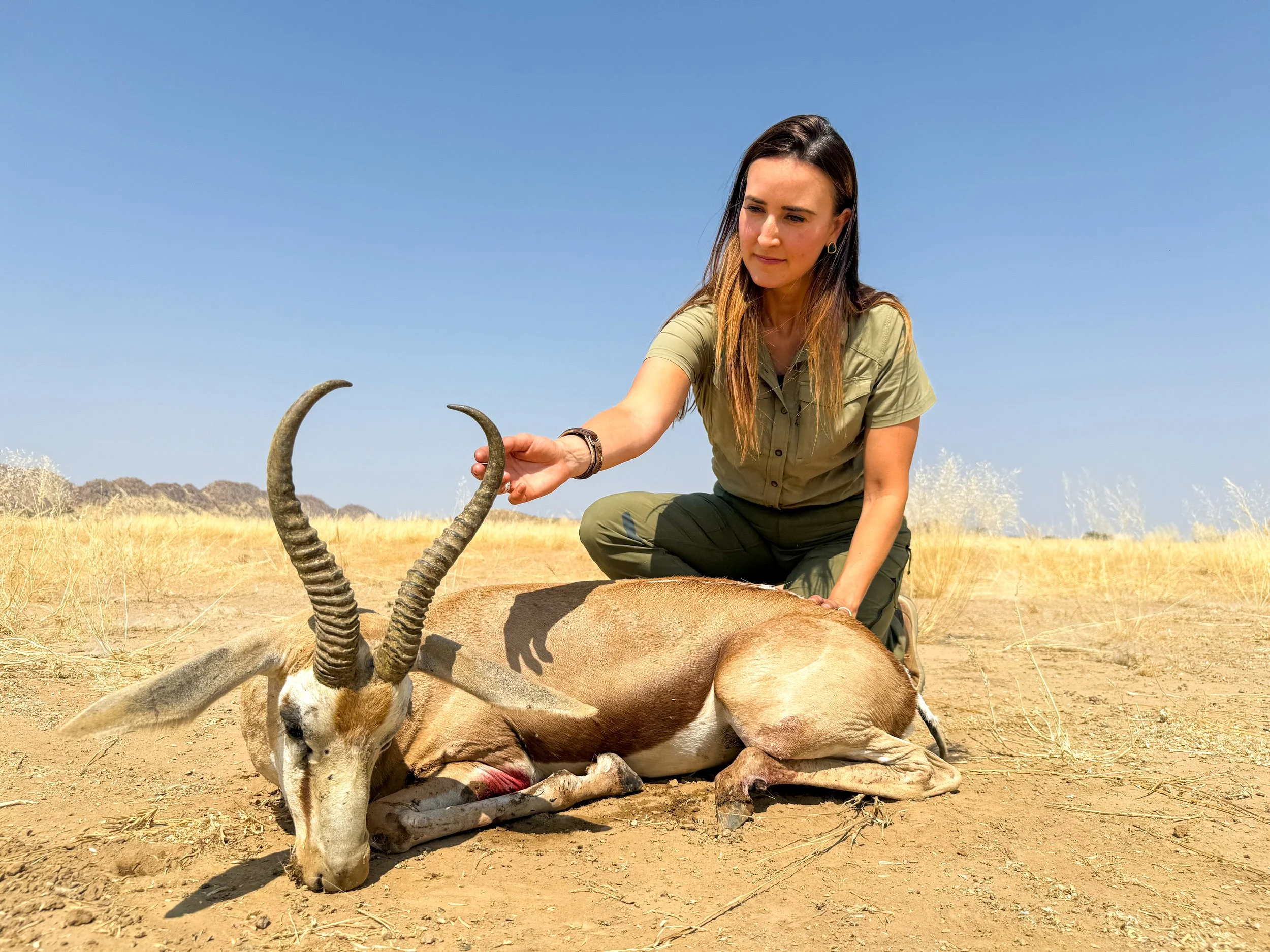

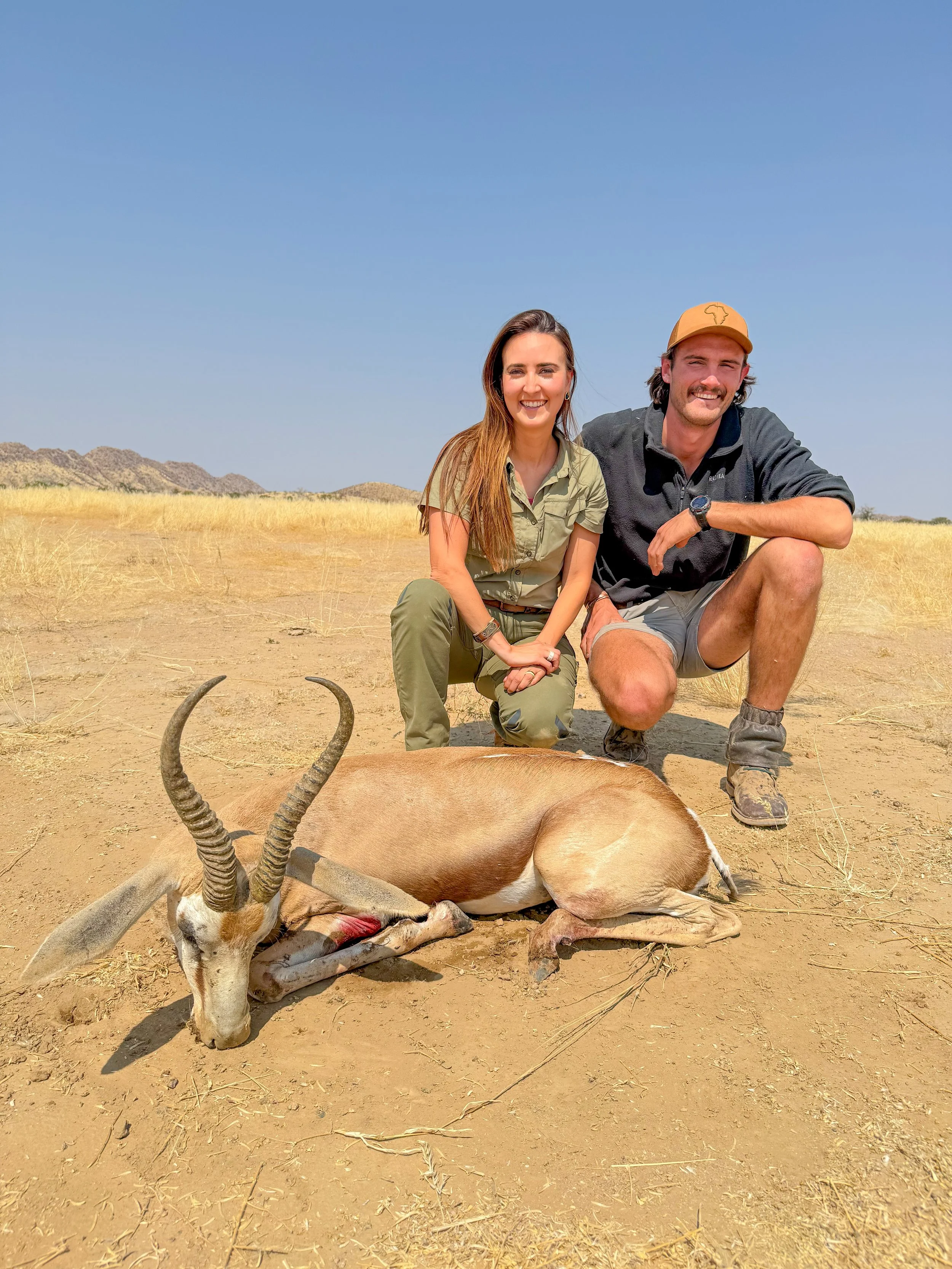
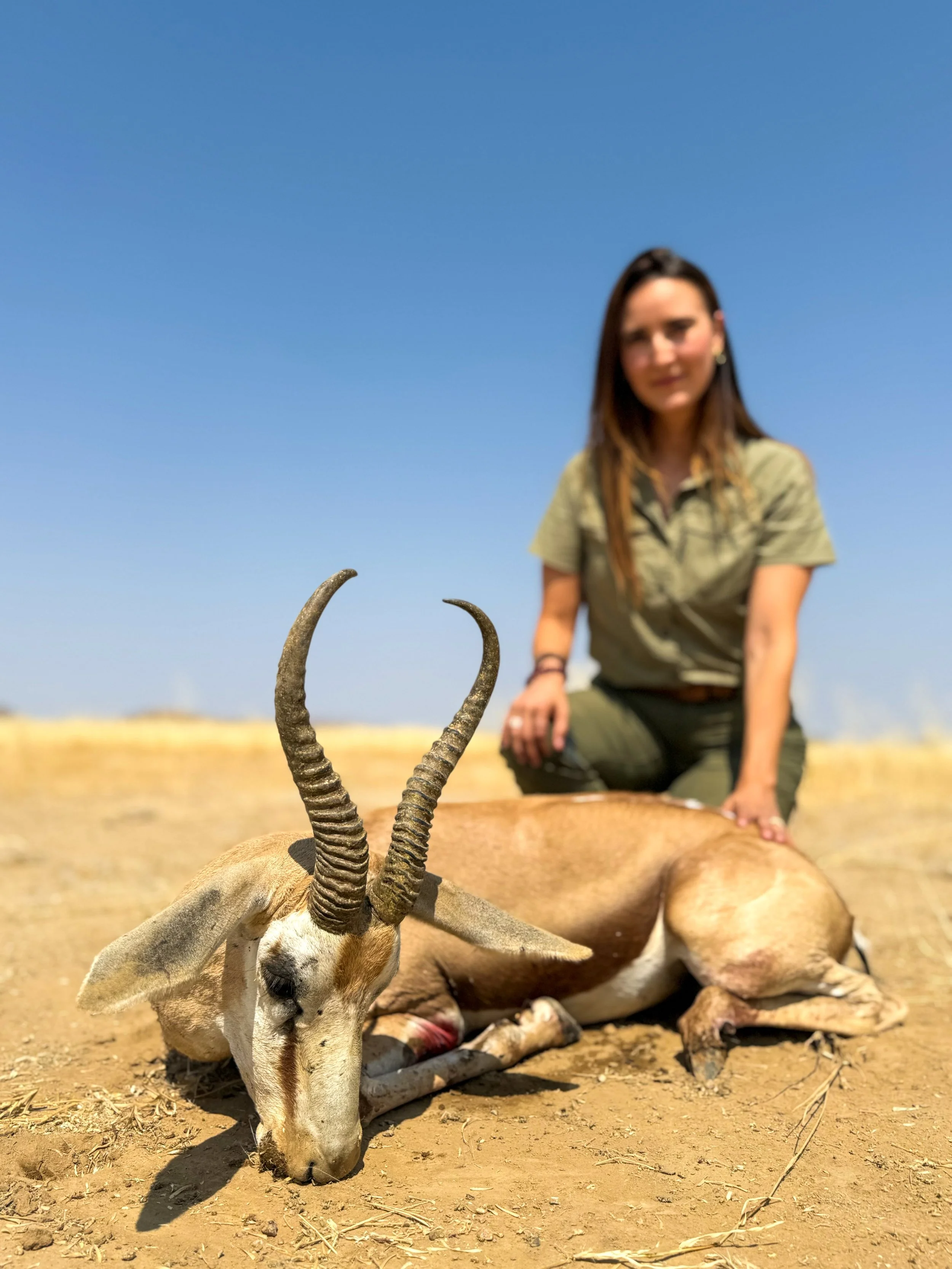
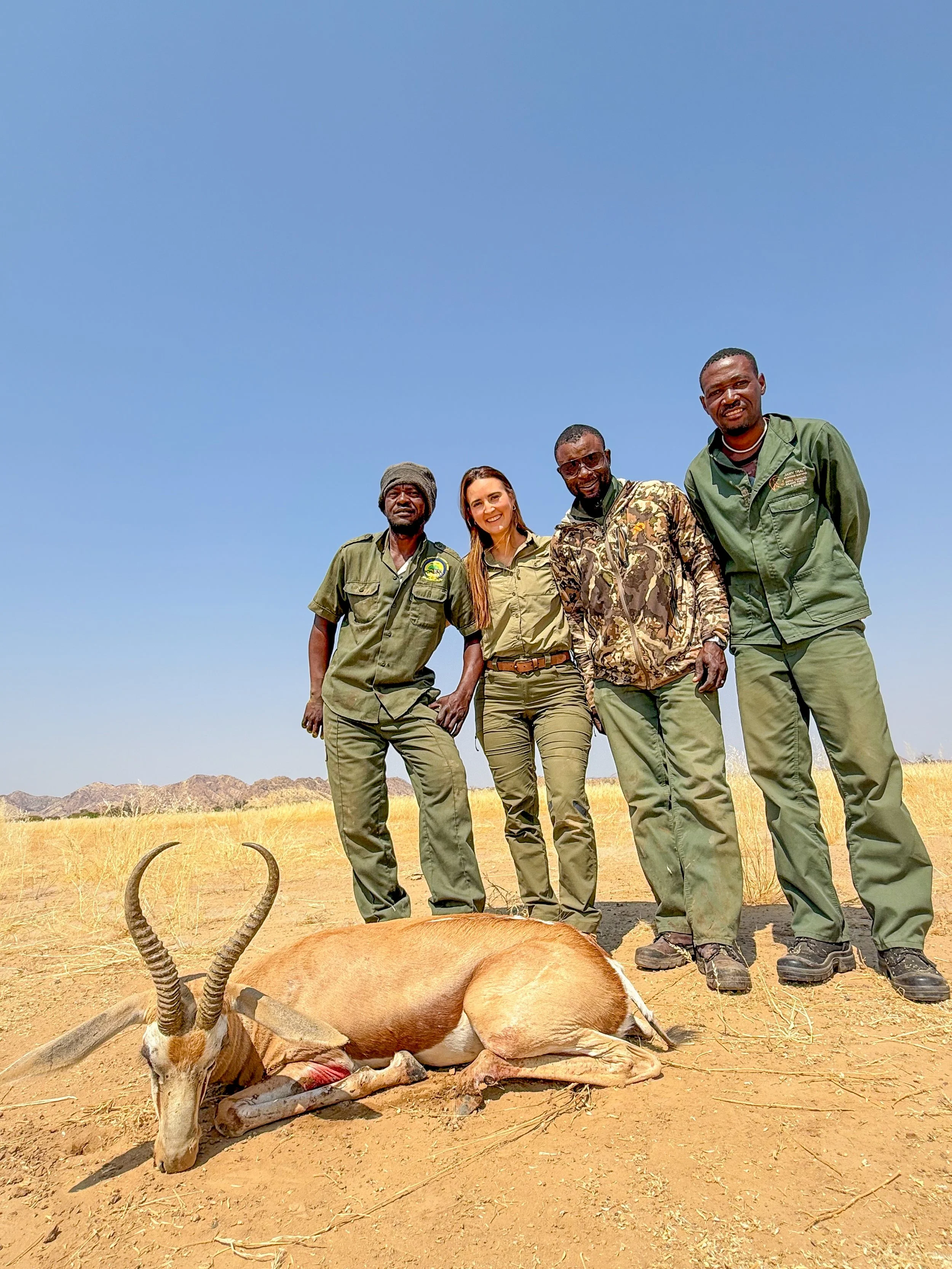
Thanks for following along on my springbok hunt. If you enjoyed this story, subscribe to the blog so you don’t miss the next adventure.
Full Circle — My First Zebra in Namibia
Two years ago, a missed zebra shot tested me in ways I wasn’t prepared for. In Namibia, with my own rifle in hand, I finally had the chance to make it right. This is the story of my first zebra — and the lessons that brought me full circle.
Looking Back: South Africa, Two Years Ago
Two years ago, I found myself behind a hunting rifle for the first time. I had traveled solo to South Africa for an international bird hunting trip: ducks, geese, and upland birds across three provinces. Picking up a rifle wasn’t part of the plan. After some shots at the range I felt confident enough to try for a Nyala, one of South Africa’s spiral-horned antelopes.
When the Nyala presented itself, I took a clean shot and it expired quickly. Relief and pride washed over me. For a first big game experience, it couldn’t have gone better.
The very next day, I decided to go after a zebra. That’s when things changed. On my first shot, I flinched at the trigger. The bullet sailed under her belly and struck her left front knee. My journal entry says it best: “She was hit but didn’t really run as I broke her leg. Some of the herd stayed close… surrounding her, so we got out of the truck to get closer for a follow-up shot.” My heart pounded as guilt sank in. Both my PH and Ramsey, who was with me, spoke at once, and I snapped that I couldn’t focus. On the second shot, she dropped, and it was over.
Relief and sadness collided. I thanked God for her, then stood for photos, trying to keep myself composed. But as the trackers loaded her into the truck, something strange happened. Three zebras came back — one about her size, maybe a little smaller, and two even younger.
It’s not common for a herd to return after a hunt. Most outfitters and PHs I’ve spoken to since have said they’d never seen anything like it. Yet there they were, no more than 15 yards away, watching. Tears ran down my face as they drew closer. I whispered, “I’m so sorry,” over and over, convinced I’d taken their mother away.
That abnormal return made the moment even heavier. It turned an already emotional experience into something I will never forget.
⸻
Namibia: My First Plains Game with My Rifle
Fast forward nearly two years. I was back in Africa, this time in Namibia, on a safari package I had won at Safari Club International. The target list had options, but on Day 2 of the hunt, fate presented me with zebra again.
It was past lunch and we were headed to camp when one of the trackers spotted three Hartmann’s zebras high on a rocky hill. My heart raced. Of course, the first animal in Namibia would be a zebra. Memories of South Africa flashed back, but so did the hours of practice I’d put in with my first rifle, the Q Fix in 8.6 Blackout. I knew this time I was ready.
My PH estimated the range at 120 yards. The rangefinder confirmed 115. I got on the sticks, picked out the zebra, and settled my reticle. Before nerves could creep in, I exhaled and squeezed. The shot was solid. She bolted 15–20 yards, then to everyone’s surprise, flipped forward off the rocks and came to rest. My PH had never seen a zebra do that before.
We climbed the hill, excitement replacing nerves. No tears this time — only gratitude. I prayed over her, thankful for the experience and the redemption of a clean, ethical shot. Roelof, my PH, grinned and said, “Bloody good job, madam. Perfect shot, eh. You put it exactly where we said.”
⸻
What This Hunt Means to Me
That moment meant everything.
Taking a zebra in Namibia wasn’t just another check mark on a list. It was redemption. It was growth. Proof that the hardest lessons shape us into better hunters.
Two years ago, I shot my first big game animal: a nyala.
The next day, August 9, 2023, I experienced one of the hardest hunts of my life with a zebra.
And two years later, almost to the date — August 10, 2025 — my first animal in Namibia, with my own rifle, was a zebra.
Full circle.
This hunt reminded me that the journey matters as much as the outcome. Hunting will always bring highs and lows, clean kills and hard lessons. It’s those moments together that make us who we are in the field.
Words can only tell part of the story. Here’s a short reel from Namibia that captures the experience:
What happens next
This isn’t just a trophy. Hunting in Africa, nothing goes to waste. That’s Conservation.
What’s unique about Namibia is how concessions and the Conservancy works to collect the meat and distribute locally to villages.
Below is a photo of the zebra meat loaded in the game guard’s truck. I’ll be sharing more soon about how that process works and the role it plays in conservation. Stay tuned for that post — it’s an important part of the story.
Follow along
If this story resonated with you, check out my raw South Africa zebra journal entry from 2023 — the experience that set the stage for this full circle moment.
And stay tuned in! Receive an email to your inbox, from me, yours truly (promise, no spam!)
Be in the know for when I share my next blog post about Namibia and this incredibly safari journey! You won’t want to miss it.


